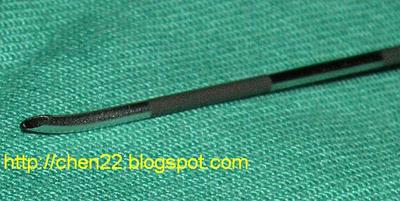- postoperative analgesia; to provide adequate pain relief and reduce post operative surgical incision pain,
- obstetric analgesia as well as anaesthesia; to reduce the labour pain for those undergoing vaginal delivery, or act as regional anaesthesia for the parturients who undergo Caesarean Section.. It is indicated in obstetric patients with high-risk labour, eg. pre eclampsia or patients with heart diseases.
- analgesia following chest/thoracic trauma; to provide adequate pain relief in those suffering several ribs fracture after Motor Vehicle Accident(MVA). This helps the patients to breathe adequately, cough and cooperate with chest physiotherapy, and improves the respiratory function.
- act as sole anaesthetic agent for Regional Anaesthesia .. especially for those patients with high risks to undergo General Anaesthesia. It is also performed for those undergoing knee and hips surgery eg. total knee replacement (TKR) or total hip replacement (THR), vascular reconstruction of the lower limbs,
- treatment for post dural puncture headache (PDPH) with epidural blood patch
For those who are unfamiliar with the terminology epidural; it involves placement of Local Anaesthetic agent (LA) into the epidural space, aka extradural space.. It can be divided anatomically into Thoracic, Lumbar & Caudal epidural. This procedure needs expertise, and is performed by the experienced Anaesthetist.
It can be performed with the patient sitting or lying in lateral position, requiring full aseptic technique (including sterile surgical gown). The epidural needle is a "huge" needle.. Over here, we use the 18 G Tuohy needle. This Tuohy needle has a curved blunt tip to reduce the risk of dural punture and facilitates the catheter direction when the epidural catheter is inserted later on after correct placement of the Tuohy needle in the epidural space. There are few methods to identify the epidural space, I personally prefered using the "Loss Of Resistance" technique using air with the LOR syringe. The catheter is inserted to allow continuous infusion of the Local Anaesthetics for continuous & effective analgesic or pain control..
 This picture shows the Tuohy needle (18G) used for epidural and the 26G spinocan needle used for spinal. The epidural needle (Tuohy needle) is a "huge" needle, 8cm in length with surface markings at 1 cm intervals, and has a blunt bevel with a 15-30 degree curve at the tip.
This picture shows the Tuohy needle (18G) used for epidural and the 26G spinocan needle used for spinal. The epidural needle (Tuohy needle) is a "huge" needle, 8cm in length with surface markings at 1 cm intervals, and has a blunt bevel with a 15-30 degree curve at the tip. This is the closed-up picture of the epidural Tuohy 18G needle with the curved blunt tip.
This is the closed-up picture of the epidural Tuohy 18G needle with the curved blunt tip.However, all procedures also have their complications and side effects.. And epidural is not excluded. And not all patients are suitable candidates for epidural However the complications and side effects are minimised in those experienced hands..
2 comments:
uh-oh kena spam, better install the code for comments.
btw must u really show the pics of the needles?? *chill ran down my spine*
:D Happy Burpday to you!!! Wishing you a wonderful year ahead :)
Babekl,
I see how things go, if lotsa comments spam, then i will activate the word verification :) I will delete the above spam comment :)
I remember reading in your blog u see the needle already previously during the antenatal class before your first labour? Yeah.. the size of the needle is indeed a bit scary but don't worry mah, we give local anaesthetic (LA) before putting in the epidural needle :)
Thanks for your birthday wishes... :D
Post a Comment